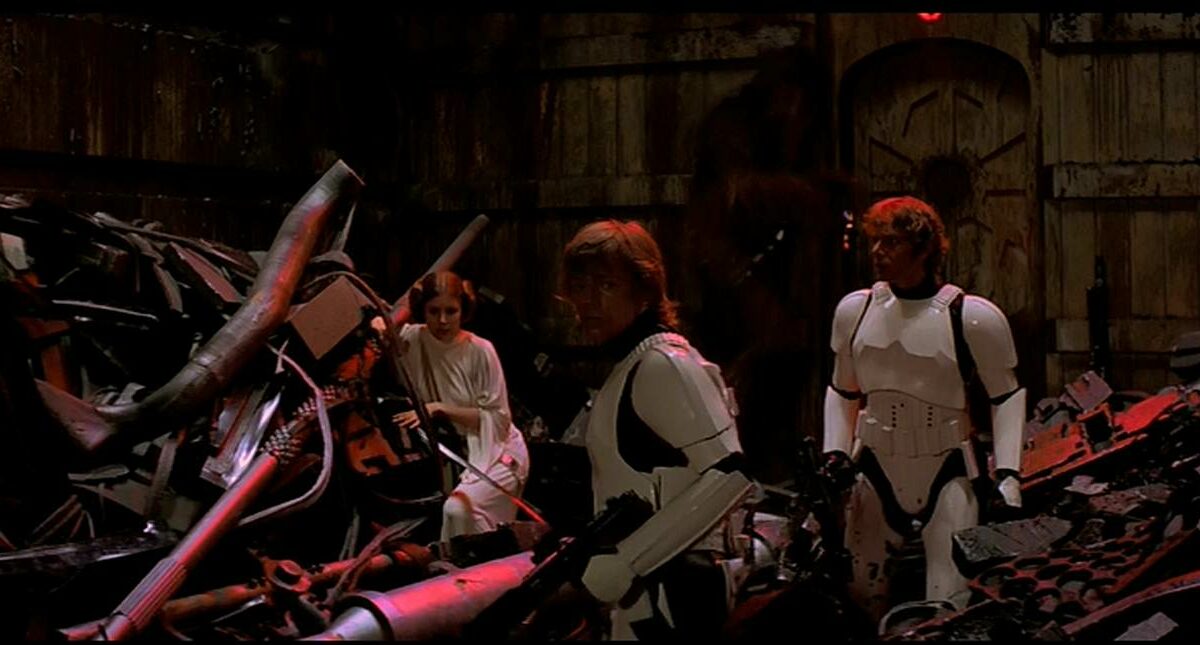Engaging an audience is vital. NASA learned about the importance of engaging teams in the hardest of ways. In 2003, the Space Shuttle Columbia set off on its disastrous final flight. But, sadly, it didn’t have to be a disaster. As the shuttle lifted off, people on the ground observed a small piece of foam strike the wing. The mission was set for 16 days, which gave Boeing engineers plenty of time to come up with a risk assessment for the foam piece. They provided this in 28 utterly dreary PowerPoint slides. The information was compressed into bullet points. Headlines were incomprehensible.
A critical equation actually wrapped from one line to the next. As information design expert Edward Tufte later noted, all of the necessary information to understand the danger was there; it was just impossible to follow. One of the recommendations that came out of the investigation into the disaster was that NASA scientists should never again rely on PowerPoint alone to present important data and scientific information. In the business world, we do nothing all day but present gobs of data with PowerPoint. NASA forbids its use for that purpose.
Somehow, in business we feel compelled to bore the hell out of each other. Arguably, we live in the most exciting time in world history. Yet we’re addicted to overwhelming graphs and tables and somnolent presentations. Sometimes, this leads to failed pitches; other times, to things far worse.
Enter Storytelling
The solution to the problem turns out to be simple: stories. From an evolutionary standpoint we are not hardwired to process abstract data points. We are set up for storytelling. For about 2 million years, we were a fairly unimpressive species. Our only technology consisted of rocks, clubs and the occasional domesticated dog. Then, about 27,000 years ago, we started sharing experiences through painting, sculpture and written stories. Our capabilities then grew on an exponential curve. In the blink of an evolutionary eye we went on to create the printing press and, soon after, virtual reality goggles.
Of course, plenty of people in the industry have woken up to the power of stories. We talk a lot about storytelling. Over time, the concept has been overused and abused to the point that it often means nothing. Seriously, chefs now talk about their food telling a story. Yet, there’s a compelling reason why we should be talking about this topic. Storytelling, done right, works. Research demonstrates that stories affect us at a deep neurological level. Using fMRI technology, we’ve learned that when people tell a good story, the teller and listener synchronize so that key areas of their brains are activated at the same time. If the story is about favorite foods, both the teller’s and the listener’s sensory cortex light up. If it’s about a race car, both of their motor cortexes activate. Even more profound, regions of the listener’s brain sometimes fire before the same regions in the storyteller’s. This happens because the listener is anticipating what will happen in the story. While bad presentations cause the audience to look for the exit, a great story gets their brain to look forward to more information.
What Makes A Story Effective?
The answer lies in the understanding that stories are about managing threats. A while ago, our industry didn’t have as strong of a need for storytelling. When the creative canvas was clearly defined with one-page print and 30-second TV ads, it was relatively easy to get teams to believe in creative ideas. The executive team already knew what they were buying, and we knew what we were selling.
Now that’s been upended. We live in a world where digital technology spreads information at light speed, so bad ideas are a threat to our careers. Whenever a person hears one, their brain instantly determines what dangers it poses. Will it threaten her job? Impact her ability to eat? Feed her children? Maintain her social status? Pay her healthcare bills?
Unfortunately, most people presenting an idea respond to this challenge with rational appeals. This is understandable. Business decisions should be rational. They should be made with the rational decision-making area of the brain, the prefrontal cortex. However, as logical as this may seem, it doesn’t actually work. It turns out that getting information to the audience’s prefrontal cortex is not a straightforward process.
Humans have areas of their brains that filter out information before it gets to their prefrontal cortex. The human brain takes up 2 percent of our body weight but uses 20 percent of the body’s energy. Anything that requires it to fire more than 2 percent of its neurons makes us pass out cold. Since we make 35,000 decisions a day, we rely on systems to reduce our cognitive load. This happens in the limbic system, which includes our old friend the amygdala, as well as the hippocampus and the thalamus. Together, they work as a filtration system, helping the brain prioritize information.
When presented with new information, the limbic system quickly analyzes it to make sure it’s not a threat. Once it approves of the information, it passes it along. But it only passes along information that is engaging at an emotional level because that’s the language of the limbic system. It manages human emotions. Ideas don’t get to the rational prefrontal cortex unless they pass through the limbic system. We can’t simply make rational arguments and expect the audience to consider our ideas. We must first emotionally engage to have cognitive permission to rationally engage.
Why Do Stories Fail To Resonate?
As an industry, we tend to do the exact opposite. When we try to show how smart we are with giant PowerPoint decks containing tons of data points, detailed charts and cutting-edge analytics, we create a threat. It’s not emotionally engaging, and it requires the listener’s brain to inefficiently process extensive information.
That’s what is happening when the audience looks at their mobile devices. They’re not just bored. They’re threatened at a subconscious level. They don’t want to spend their rapidly waning levels of glucose in their brain listening to you; they look for more important threats in their mobile device. At that moment, their physiological makeup changes. They create neural pathways to process other information, and their hormonal structure changes when faced with outside threats. The chances of recapturing their attention is close to zero.
If our goal is to do breakthrough work that creates passion brands, we need to get our teams to rally around unprecedented ideas. Research and data are a necessary part of the ideation process. But that’s not enough to build internal alignment and excitement. In fact, great ideas are not enough. We need to tell compelling stories that make an emotional connection during our presentations.
Contributed to Branding Strategy Insider by: Jeff Rosenblum and Jordan Berg, excerpted from their book Friction: Passion Brands in the Age of Disruption, published by powerHouse Books.
The Blake Project Can Help: The Strategic Brand Storytelling Workshop
Branding Strategy Insider is a service of The Blake Project: A strategic brand consultancy specializing in Brand Research, Brand Strategy, Brand Growth and Brand Education




